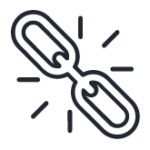Introduction: Understanding TRON Blockchain Technology
TRON is a blockchain-based decentralized platform that aims to create a free, global digital content entertainment system with distributed storage technology. It allows users to store and publish content, as well as build decentralized applications (DApps) on its network. Understanding the basics of TRON’s blockchain technology is essential for developers looking to venture into TRON development.
Setting Up Your Development Environment for TRON
To begin developing on the TRON network, you will need to set up your development environment. This involves installing the necessary tools and software such as Node.js and TRONBox. TRONBox is a development framework that simplifies the process of building and testing smart contracts on the TRON network. Additionally, you may want to use a code editor like Visual Studio Code for writing and debugging your smart contracts.
Basics of Smart Contract Development on TRON
Smart contracts are self-executing contracts with the terms of the agreement between buyer and seller directly written into lines of code. In TRON development, smart contracts are written in the Solidity programming language, which is also used in Ethereum development. Developers can create smart contracts to define rules and automate processes on the TRON blockchain. Solidity provides a range of functionalities for developers to implement complex logic in their smart contracts.
Interacting with TRON Network: APIs and Tools
Interacting with the TRON network requires the use of APIs and tools that allow developers to communicate with the blockchain. TRON provides APIs such as the TRONGrid API, which enables developers to retrieve real-time blockchain data. Tools like TronLink, a browser extension wallet, can be used to interact with TRON DApps directly from the browser. These APIs and tools facilitate seamless integration with the TRON network for developers.
Testing and Deploying Your TRON DApp
Before deploying your TRON DApp to the live network, it is essential to thoroughly test it to ensure its functionality and security. Tools like TRONBox provide a testing environment for smart contracts, allowing developers to simulate interactions with the TRON blockchain. Once the DApp has been thoroughly tested, it can be deployed to the mainnet using tools like TronGrid or TronScan. Deploying a DApp to the TRON network makes it accessible to users worldwide.
Resources and Further Learning for TRON Development Beginners
For beginners looking to dive deeper into TRON development, there are various resources available to aid in their learning journey. The TRON documentation provides detailed information on developing smart contracts, interacting with the TRON network, and deploying DApps. Online tutorials and forums like the TRON developer forum can also provide valuable insights and support from the TRON community. Additionally, attending TRON developer conferences and workshops can offer hands-on experience and networking opportunities for aspiring TRON developers.
Comparison Table: TRON Development Tools
| Tool | Description |
|---|---|
| TRONBox | Development framework for building smart contracts on TRON |
| TronLink | Browser extension wallet for interacting with TRON DApps |
| TRONGrid API | Provides real-time blockchain data for developers |
By following this beginner’s guide to TRON development, aspiring developers can gain a solid foundation in building decentralized applications on the TRON network. With the right tools, knowledge, and resources, developers can create innovative DApps that leverage the power of blockchain technology for a variety of use cases. As TRON continues to grow and evolve, there will be even more opportunities for developers to contribute to the TRON ecosystem and shape the future of decentralized applications.

